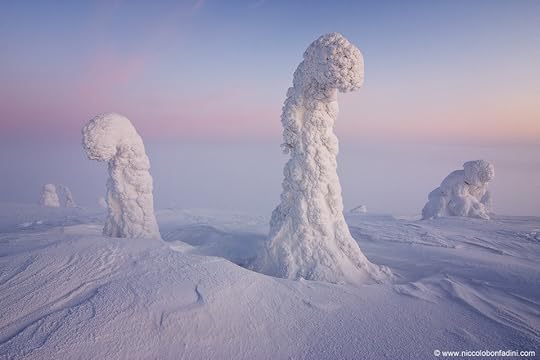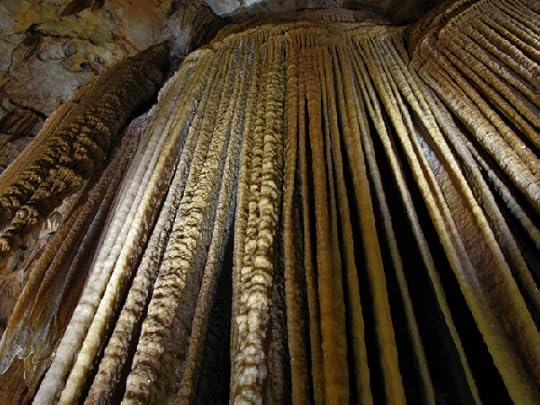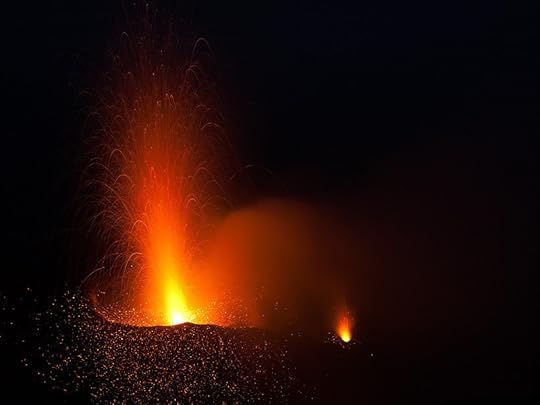Alien Landscapes
What would we see if we stood on an alien world?
As the word ‘alien‘ originally meant ‘foreigner, stranger, one who is not a naturalized citizen of the country in which they are living,‘ we naturally expect everything alien to be different, and perhaps it will be, but the laws of physics are universal so we should expect some similarities. The classic sci-fi interpretation is often as though a blue/purple/black filter (or blood red filter) had been placed over the lens of a camera just for the sake of it. And although there is some scientific basis to this assumption, as different stars will emit different intensities of radiation, it is an overly simplistic way of coming up with something ‘different‘ for the sake of being different. We have black plants here on Earth, though, making them not-quite-as-alien as we thought.
The danger is that science fiction may be trying too hard to come up with something radically different just so it seems alien, with alien being synonymous for jaw-dropping and unexpected. Reality may be stranger than fiction in that the laws of physics and chemistry are what determine biology, and as the laws of physics and chemistry are universal, astrobiology too may be much more similar than we’d expect.
Theoretically, life could arise in a multitude of places we wouldn’t anticipate, using chemistry we haven’t seen exploited on Earth (like silicon-based lifeforms), but as a university professor recently pointed out to me, the odds on favorite has to be carbon from a purely chemical perspective. Carbon is the most versatile atom for forming complex molecules.
So what would alien landscapes look like? Well, they’re going to be bound by the same laws of physics and chemistry we have on Earth, although probably in different proportions, as it’s unlikely there will be the same gravitational strength, or atmospheric mix, etc.
I’d venture to say with the astounding diversity of environments we see on Earth, there’s enough versatility to give us a good idea about alien landscapes.
These are snow covered trees in lapland, with temperatures dropping as low as -40c in winter, these hardy trees survive encased in ice.
Just a couple of hours from where I was born you can find boiling mud in the thermal wonderland of Rotorua. As a kid, I’d marvel when we’d stop by the side of the road to watch mud bubbling away in the forest.
If you ever get to Sydney, Australia, you should take a trip to the Blue Mountains to the Jenolan Caves. It takes several hours to walk through these caves, but the stalactites and stalagmites are magnificent.
Grand Prismatic Spring in Yellowstone is an example of how “alien” life on Earth can be. The deep blue color is the natural result of water clarity and depth, but the greens, yellows and ocre-reds are all the result of bacterial life. In particular, this spring hosts chemotrophs, microbes that use chemicals rather than photosynthesis as their energy source, but its the cyanobacteria, photosynthesizing bacteria, that give off the green, yellow and ruddy colours. Chemotrophs and cyanobacteria are among the oldest forms of life on Earth.
Any alien world will undoubtedly have volcanoes, but, as we have seen within our own solar system, not necessarily volcanoes seething with boiling magma. The moons of Jupiter, Saturn and Neptune have all displayed cryovolcanoes, erupting with cold/frozen gases and liquids such as water, methane and ammonia. Volcanoes like these may well be the chemical mixing pot for life on other worlds.
Here on Earth we see a variety of life arising around volcanic hydrothermal vents where sunlight can never penetrate.
Although it might look like something from the Alien franchise of movies, this microscopic worm was discovered around a deep sea thermal vent.
With nematodes being discovered up to a mile beneath the Earth’s surface, the extreme boundaries at which live can thrive continues to be redefined. Life is far more remarkable and surprising, resilient and prolific than we dared to imagine even just a decade ago, raising hopes of life being able to etch out an existence in the far-flung corners of our own solar system on planets and moons like Mars, Enceladus and Europa.












